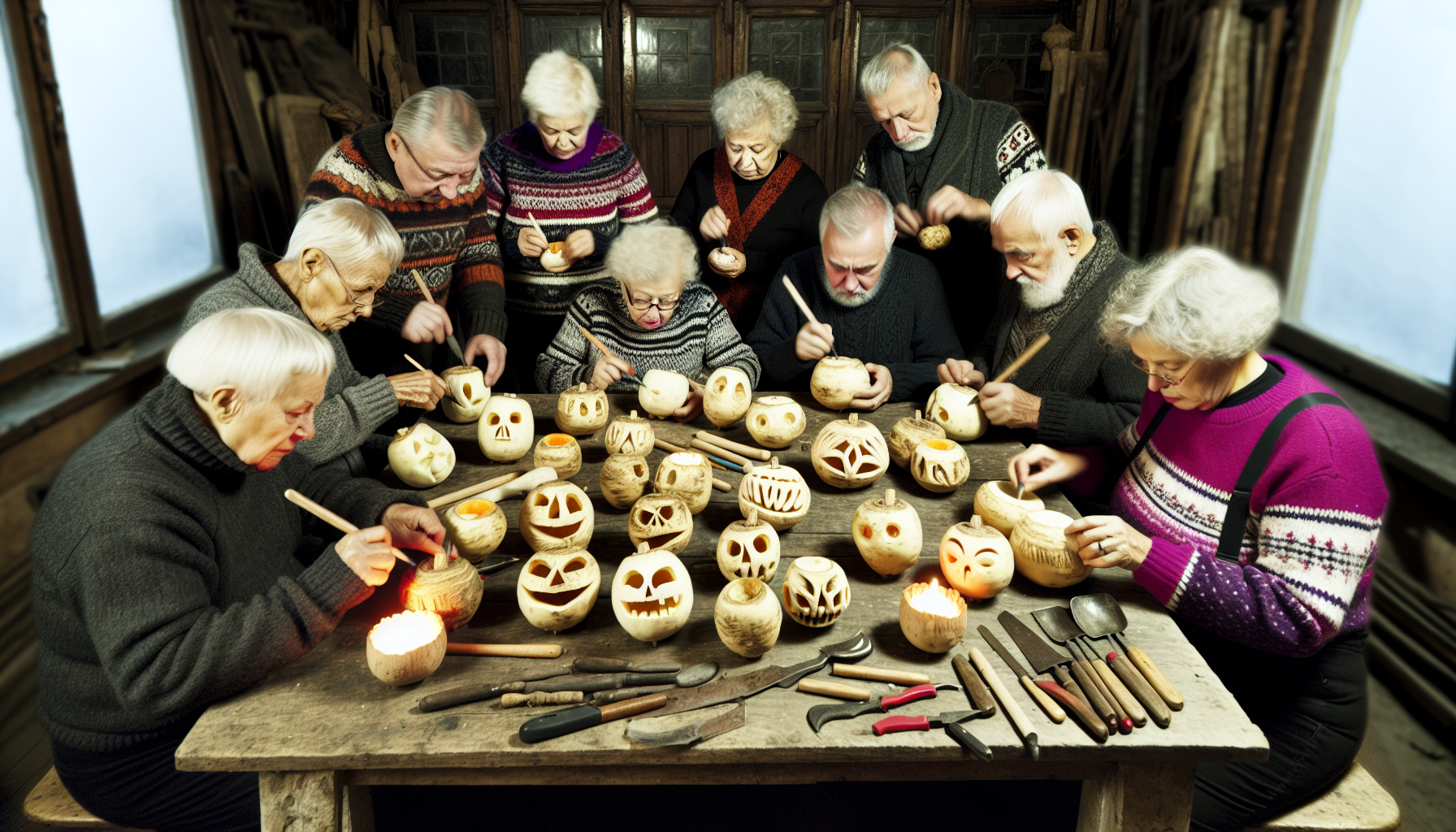As Halloween approaches, a unique and nostalgic workshop is set to take place, offering participants the chance to learn the art of carving spooky turnips. This traditional Irish practice, which predates the now-popular pumpkin carving, is making a comeback, bringing with it a slice of Halloween history and a touch of Celtic charm.
The Return of the Turnip: A Halloween Tradition Revived
In a world where pumpkin carving dominates Halloween decorations, Ireland is rekindling its connection to a more ancient tradition. The workshop, detailed on Yay Cork, invites attendees to explore the art of carving turnip pumpkins, a practice deeply rooted in Irish Halloween lore.
Why Turnips?
Long before pumpkins became the go-to canvas for Halloween artistry, Irish households turned to turnips. This choice wasn’t merely a matter of preference; it was born out of necessity. In the past, pumpkins were not readily available in Ireland, prompting creative alternatives for festive decorations.
The Workshop Experience
Open to all skill levels, this crafty workshop promises a hands-on experience in turnip carving. Participants are encouraged to bring their own tools, with suggestions including:
- Paring knives
- Ice cream scoops
- Small carving tools
These implements will help attendees transform humble turnips into spooky masterpieces, perfect for adorning doorsteps and windowsills.
The Art of Turnip Carving
Carving a turnip requires a different approach compared to its softer, more pliable pumpkin counterpart. The dense flesh of the turnip presents both challenges and opportunities for creative expression.
Techniques and Tips
Hollowing Out: The first step involves carefully hollowing out the turnip. This process requires patience and precision, as turnips are significantly harder than pumpkins.
Design Transfer: Once hollowed, carvers can transfer their designs onto the turnip’s surface. Simple patterns often work best due to the turnip’s smaller size and denser texture.
Carving: Using small, sharp tools, participants will bring their designs to life. The workshop will likely cover techniques for creating depth and texture in the carving.
Safety First
Given the hardness of turnips and the sharp tools involved, the workshop is expected to emphasize safety measures. Proper handling of tools and careful carving techniques will be crucial aspects of the instruction.
The Cultural Significance
The revival of turnip carving is more than just a crafty activity; it’s a celebration of Irish heritage and Halloween traditions.
Origins of Jack-o’-Lanterns
The practice of carving faces into vegetables stems from the Irish legend of Stingy Jack, a tale that gave birth to the term “Jack-o’-Lantern.” Originally, these lanterns were carved from turnips, beets, or potatoes in Ireland and Scotland.
Transition to Pumpkins
When Irish immigrants arrived in America, they discovered pumpkins – a fruit native to the New World. Larger and easier to carve, pumpkins quickly became the preferred choice for Jack-o’-Lanterns in the United States, a tradition that eventually spread globally.
Benefits of Turnip Carving
Engaging in this traditional craft offers several benefits:
Cultural Connection: It provides a tangible link to Irish heritage and Halloween’s Celtic roots.
Sustainable Option: Turnips are often locally sourced and biodegradable, making them an eco-friendly alternative to plastic decorations.
Unique Decor: Carved turnips offer a distinctive and conversation-starting Halloween decoration.
Skill Development: The intricate nature of turnip carving can improve fine motor skills and patience.
Beyond the Workshop
The impact of this workshop extends beyond the event itself. It serves as a catalyst for reviving and spreading awareness about traditional Halloween practices.
Inspiring Home Crafts
Attendees are likely to take their newfound skills home, potentially inspiring friends and family to try turnip carving. This ripple effect could lead to a broader resurgence of the practice.
Educational Opportunities
Schools and community centers might adopt similar workshops, using turnip carving as a way to teach children about cultural history and traditional crafts.
Frequently Asked Questions
Q: Is turnip carving harder than pumpkin carving?
A: Yes, turnip carving is generally more challenging due to the vegetable’s harder texture and smaller size.
Q: Can I use the same tools for turnip carving as I do for pumpkins?
A: While some tools overlap, smaller and sharper implements are often more effective for turnips.
Q: How long does a carved turnip last?
A: Carved turnips typically last about the same time as carved pumpkins, around 5-10 days if kept cool and dry.
Q: Are turnips a more sustainable option than pumpkins?
A: It depends on local availability, but turnips are often more sustainable due to their smaller size and lower resource requirements for growth.
Q: Can children participate in turnip carving?
A: With proper supervision and age-appropriate tools, children can participate, though extra caution is needed due to the turnip’s hardness.
Conclusion
The turnip carving workshop offers a unique blend of tradition, creativity, and cultural education. By reviving this ancient practice, participants not only create distinctive Halloween decorations but also connect with a rich vein of Irish folklore and history. As the carved turnips flicker to life this Halloween, they’ll serve as a reminder of the holiday’s diverse and evolving traditions, bridging the past and present in a truly spooky and delightful way.
Source: Yay Cork
